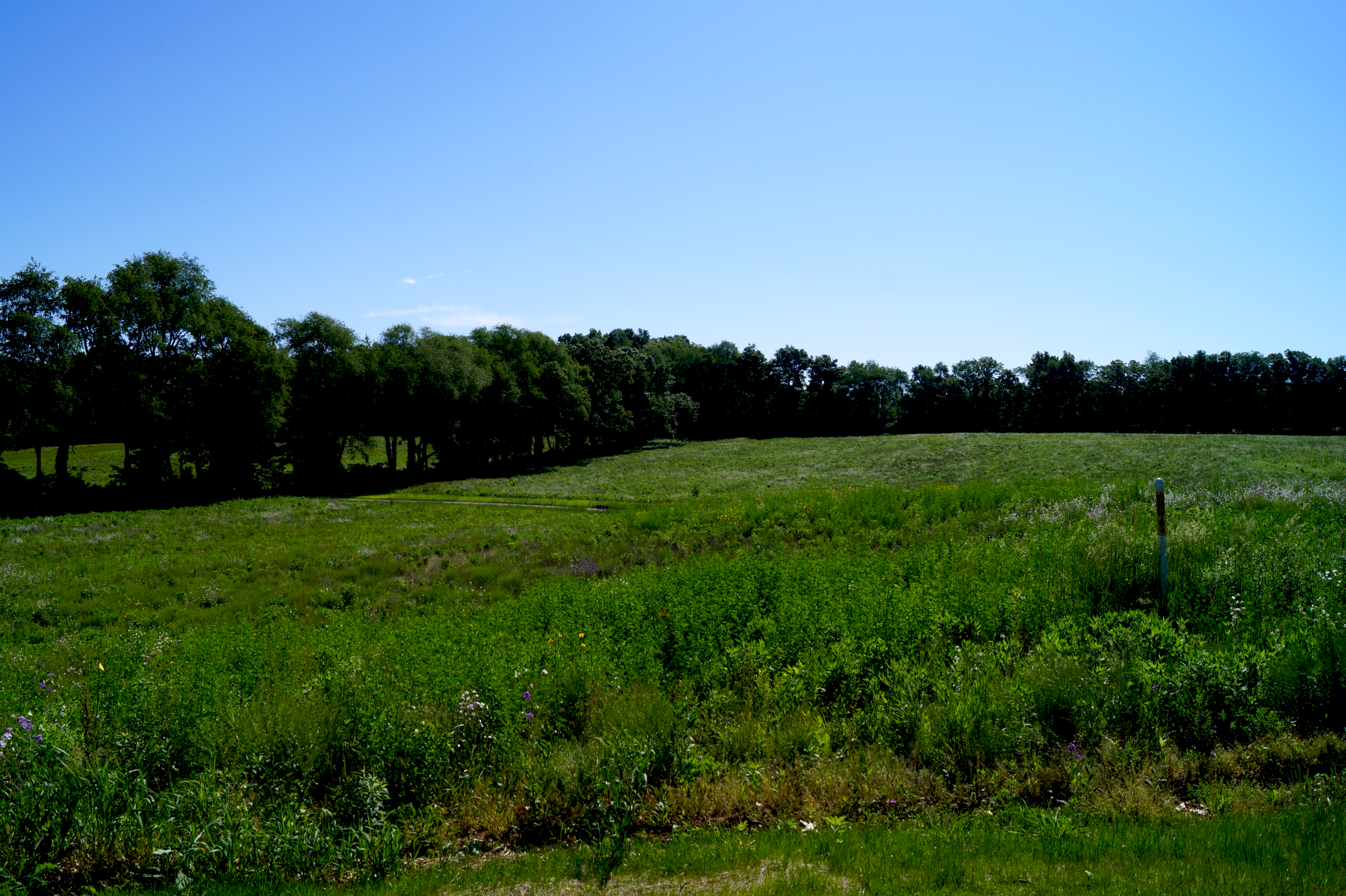Calhoun County Parks Commission Comes Together With NHBP to Name New Park
It was a beautiful morning on Saturday, June 4, when the name of the newly completed park in Albion, Michigan, was unveiled. Calhoun County Parks partnered with the Nottawaseppi Huron Band of the Potawatomi to name the park. Tribal Council Secretary Nancy Smit was in attendance to represent the Tribe on this special day.
“We are very excited to work with the Nottawaseppi Huron Band of Potawatomi for a new name for the park. We are very excited to introduce our newest county park Ménwabek Meadow Park. Ménwabek is a rough translation of ‘beautiful metal’ that the Tribe helped us with. They were very kind in the park’s commission asking of all these different ideas and all these different names that they had to go talk with Native speakers and find translations with, and the one that really stuck was Ménwabek. This translates into beautiful metal, which correlates to that Ironwood and the Belle Isle. It is a way to connect it to the Iron Belle but also to make it our own and make it unique to our community.”
The park is a trailhead for the Iron Belle Trail, the state’s premier trail. It stretches from Ironwood, located in the Upper Peninsula, to the Belle Isle State Park in Detroit. When completed, the hiking trail will be over 1,200 miles long, and the biking trail will be 828 miles long. It is also on the Great Lake to Lake trail, stretching from South Haven to Port Huron. Lastly, it is also located on the North Country Trail. This 4,800-mile trail stretches from North Dakota to Vermont, which comes through Calhoun County.
Coming to Fruition
Plans for this park began in 2018 when the DNR gave the commission a Michigan Natural Resources Trust Fund Grant. The trust fund was set up from state land that contains oil and gas. The subsequent revenues the state collects go into a large pool of funds for grants to make projects like this happen.
The commission acquired the first grant in 2019, and the DNR committed $232,000, allowing the commission to purchase the property where the park is now located. Later that year, the DNR awarded the commission another grant of $406,000 for development, including demolishing the property’s two homes and planting seeds. Since this was a “match” deal, the commission had to provide 25% of their needed funds to receive the rest.
Due to the generosity of the families who previously owned the property, the commission was able to provide their match with the discounted property price. The families were excited to see what could be done with the land.
The second grant was received through a partnership with Albion College, the Kalamazoo River Recreational Foundation and the Parks Millage to provide the local grant match. Senator Mike Noffs also played a large part in initially bringing the plan to fruition.
Not Just a Stop Along the Way
While being a trailhead for major trails is a unique facet of this park, it is not the most important characteristic. The Commission’s goal for the park is to continually restore it into a natural prairie and meadow. Forty acres of the park are currently planted with the hopes of planting more in the remaining eight acres. By doing so, the land will benefit from the natural habitats that will come out of this.
The plants chosen for this park are all from the DNR pollinator mix that provides the land with native regional seed mixes to support pollinator habitats and other wildlife populations. Some species in the pollinator mix include common milkweed, black-eyed Susan and Indiangrass.
While overlooking the field, Smit touched on the importance of sustainability and respect for our earthly home.
“I think what this says to me more than anything is that people are aware that we are not the first ones to walk on this land, and we won’t be the last,” Smit said. “Along with the importance of preservation, just giving acknowledgment, whether spiritual or mental, that our Mother Earth is talking to us. Our mother and our Creator want us to be good stewards. I know I hear from my kids who are adults now how vital it is that we are teaching young people the importance of the land that we walk on.”
Through working with the Tribe, the commission encourages others to learn their language and their teachings. They are giving incentives for people to utilize them as well.
“One of the reasons the parks commission was passionate about working with the Tribe was because before this land would have been a farm, there was a local community already stewarding this land that came well before any of that. Calhoun County is humbled at the opportunity to see how we can steward this land into whatever is next for it, the next phases of this development. Whether that be more wildflowers, we have maple trees that can produce syrup. We have tons of seeds to teach people how to collect their own wildflower seeds on this property. But also whatever the community wants to see. I think a lot more can come out of this property that we do not even know yet. We just appreciate the help from the Tribe and hope that we can be good stewards of this property moving forward.”
Through such projects, it is not only the wildlife and plants that grow but those of us who are involved and who witness it grow, as well.





0 Comments